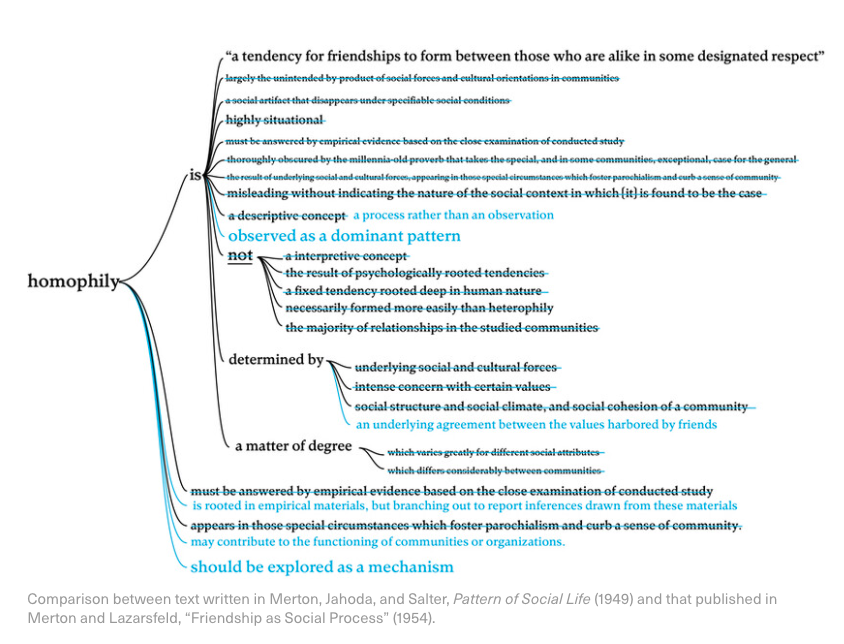Homophily: The Urban History of an Algorithm
https://www.e-flux.com/architecture/are-friends-electric
Fall 2019
Archival Research, Writing, Javascript, Physical Exhibition Design
By: Laura Kurgan, Dare Brawley, Brian House, Jia Zhang, and Wendy Hui Kyong Chun
There are 2 essays in this series published by E-flux. This project was also exhibited at the Chicago Architecture Biannual in 2019 as an installation.
I worked with coauthors in the archival research, writing, exhibition and print design for the project. I produced the online interactives and select graphics for the articles/exhibition.
Some of the interactives can be found here:
A illustration of how tolerance changes networks with triadic closure
A demonstration of effects of weak vs strong ties on a network
An illustration of network diameter
An overview of citation records for Homophily
From the first article:
The word “homophily” was coined in a highly-cited 1954 essay by Paul F. Lazarsfeld and Robert K. Merton on friendship in a mixed-race housing project in Pittsburgh, Pennsylvania. The researchers were suspicious of the “familiar and egregiously misleading question: do birds of a feather flock together?” They focused on “racial attitudes,” and concluded that friendships form and persist not simply on the basis of shared identities but also thanks to shared values and beliefs…
Read the full article at e-flux.









